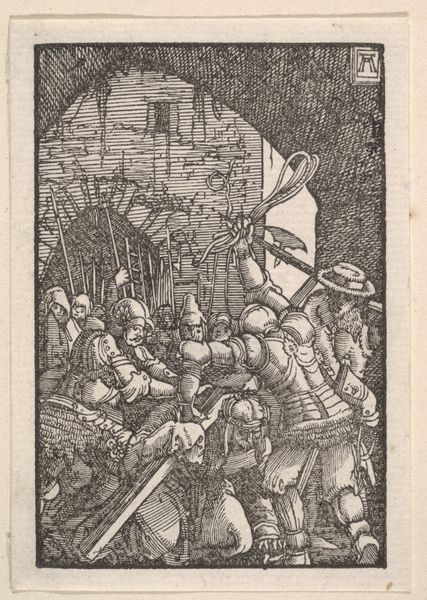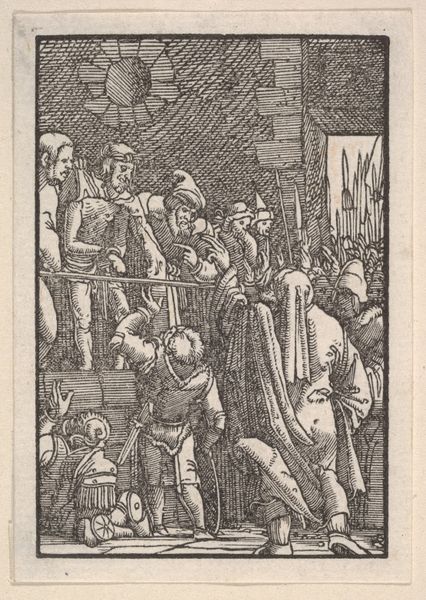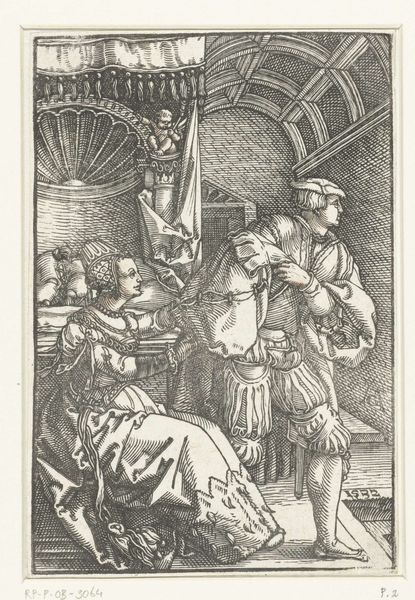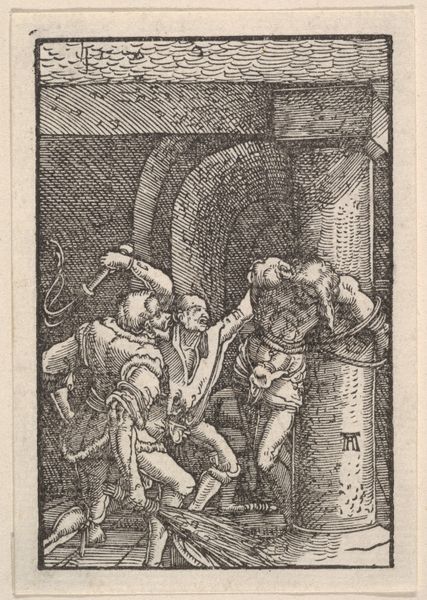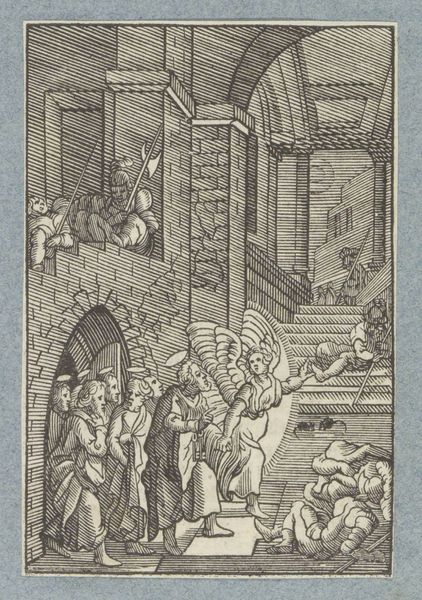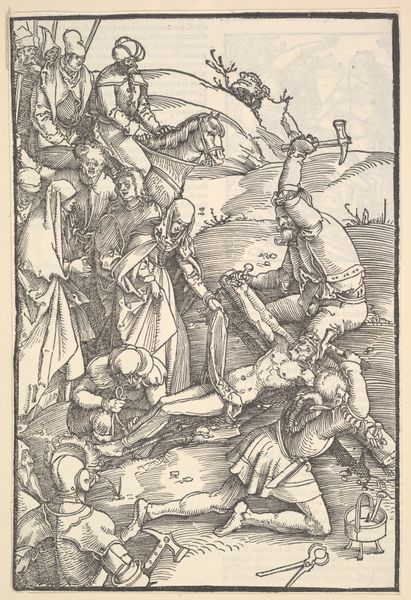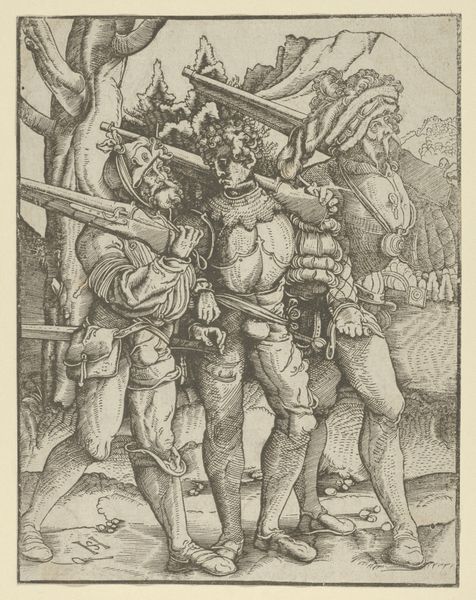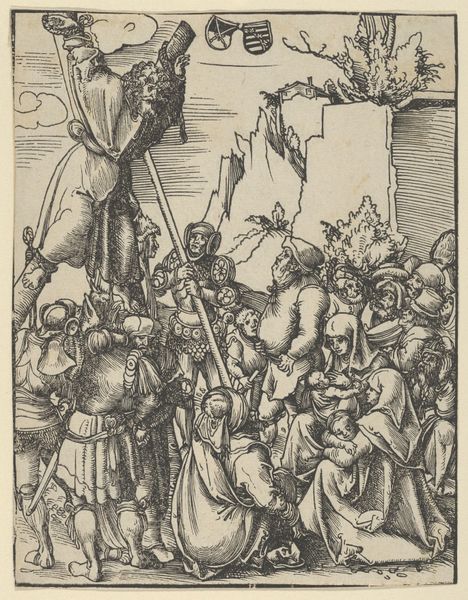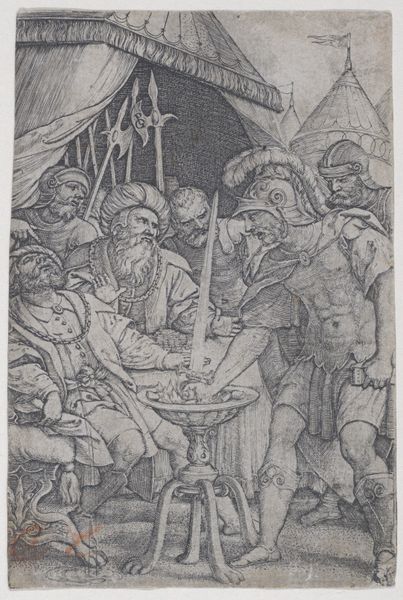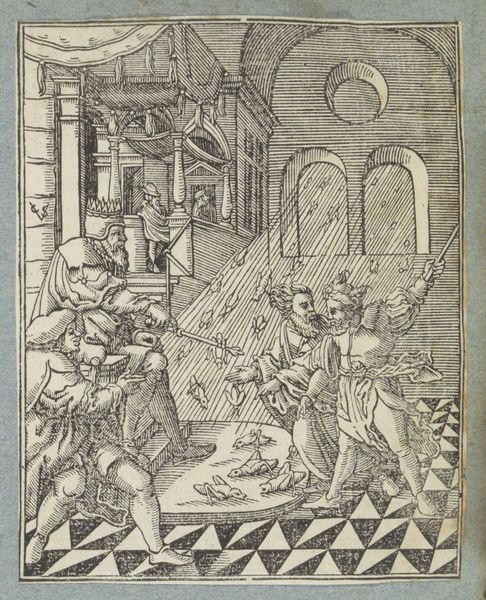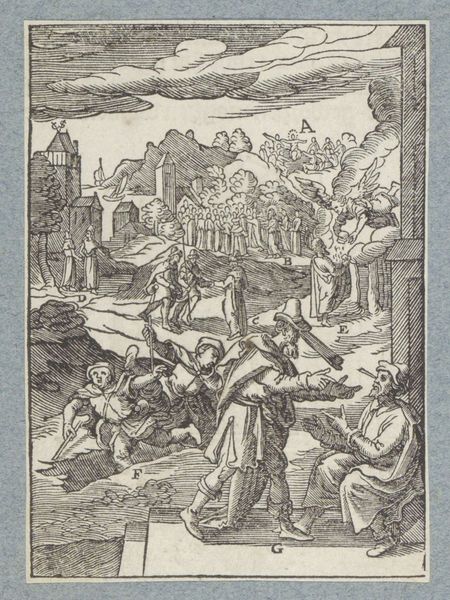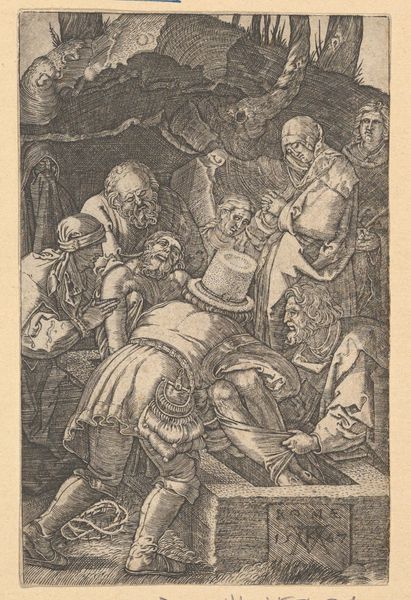
Pilate Washing His Hands, from The Fall and Salvation of Mankind Through the Life and Passion of Christ 1508 - 1518
0:00
0:00
drawing, print, woodcut
#
drawing
#
narrative-art
# print
#
figuration
#
woodcut
#
history-painting
#
northern-renaissance
Dimensions: Sheet: 3 1/8 × 2 3/16 in. (8 × 5.5 cm)
Copyright: Public Domain
Editor: We're looking at Albrecht Altdorfer's woodcut, "Pilate Washing His Hands," which comes from a series created between 1508 and 1518. I am struck by the strong contrast, the busyness of the composition, and the figures crowded into the small space. It creates a very claustrophobic, anxious feeling. What details stand out to you, and how do you interpret the effectiveness of Altdorfer's artistic choices? Curator: Observe the architecture; the severe horizontals of the brickwork amplify that sense of compression. The cross-hatching, rendered in a deliberate and regular pattern, yields a flattening effect, pushing the figures forward. See how the artist balances this by implementing a vanishing point implied by the receding spears to the left? What of the figures themselves? Editor: There's a clear division, literally and figuratively, with Pilate and the basin taking center stage. Curator: Indeed. The composition draws attention to Pilate, bathed in a lighter tone, as he performs this symbolic act. Note how his gesture of washing, rendered with careful linearity, divides the image, juxtaposing the accused with the accusers. What significance might we attribute to the almost sculptural relief on the chest before him? Editor: It looks like maybe angels? It contrasts with the crude weapons carried by the soldiers. Curator: Precisely. This interplay of textures, refined carving set against the rough hewn woodcut marks, produces an interesting dynamic that draws the eye to a deeper understanding. And it begs the question, how does the sharp detail against areas of less refinement and dark blacks heighten the emotional intensity of this scene? Editor: I see what you mean; it's all these formal elements working together to really bring out the gravity of the moment, even beyond just the narrative itself. Curator: Exactly. By examining Altdorfer’s careful orchestration of line, tone, and composition, we can engage more thoughtfully with his narrative. Editor: I've definitely learned a lot more about how to "read" a print like this!
Comments
No comments
Be the first to comment and join the conversation on the ultimate creative platform.
